The U.S. Airborne Strategic Command, Control, and Communications Program Office have purchased a retired Royal Air Force E-3D for $15 million to be used as an E-6B Mercury pilot training aircraft.
The E-3D is an airborne early warning and control system, commonly known as AWACs or AEW&C, the UK is switching to E-7 Wedgetails. You can read more about this here.
British E-3D Sentry completes last mission before retirement
The programme office say here that they had been looking to acquire a dedicated training aircraft for the fleet to take the strain off using the current mission-capable E-6 aircraft.
“Since the E-6’s inception over three decades ago, the Navy has looked for ways to train pilots and keep them up to date on the airframe. Those options have included leasing several different commercial aircraft as well as using the mission-capable aircraft.”
They say that the aircraft will help reduce an estimated 600 flight hours and 2,400 landings/cycles per year from the E-6 mission aircraft.
“The training flights expose mission aircraft to significant wear-and-tear and impact their readiness and availability,” said Capt. Adam Scott, PMA-271 program manager.
“This is a great chance to work with the United Kingdom and bring a much-needed aircraft to the fleet.”
Both the E-3 and E-6 are militarised versions of the Boeing 707.
What is the E-6B Mercury?

The U.S. describe it as a “communications relay and strategic airborne command post aircraft. Provides survivable, reliable, and endurable airborne command, control, and communications between the National Command Authority and U.S. strategic and non-strategic forces. Two squadrons, the “Ironmen” of VQ-3 and the “Shadows” of VQ-4 deploy more than 20 aircrews from Tinker Air Force Base, Okla. to meet these requirements.”




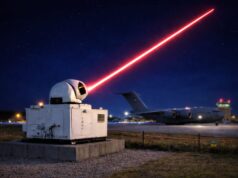
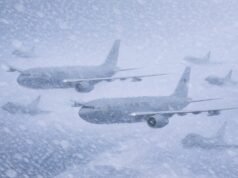
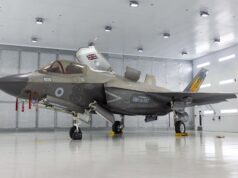
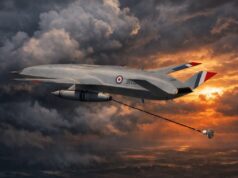
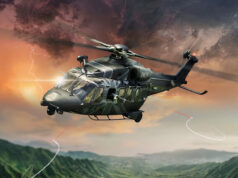





nice it’s going to a good home, it’s just a shame that once again we are getting rid of an asset before the new ones arrive which is becoming a normal way of doing things, and yes I do know money has a lot do with it, but ever since the Berlin wall has come down, defence has always been on the back foot, while our potential enemies are teaching kids how to use weapons etc, ours are no longer taught things like D day or the Battle of Britain…
It was an awful lot simpler in the 80’s….. big bad Soviets/Warsaw Pact poised to invade Western Germany, easy identifiable threat, easier to justify defence expenditure….
D day and the battle of Britain are both on the syllabus
World War Two was always a very popular, and usually well-taught, topic in primary schools, the government decided not to include it as a compulsory topic in the National Curriculum which came into effect in August 2014.
I don’t know if this has changed recently though.
well both my niece and nephew one is 10 one is 12 both asked me what they were, which i found annoying as it is part of world history, I was lucky when I turned 15 the history class took us to aromanches, where we saw the remains of the mulberry harbour, but more interesting was a plate on one of them saying built in Sunderland Tyne and Wear
“remains of the mulberry harbour, but more interesting was a plate on one of them saying built in Sunderland Tyne and Wear”
That’s interesting, as my Grandad was one of the engineers who built them. He never talked in detail about what he did to us grandkids though. My Nanny told me. ❤
Yes, absolutely!
OT : Tempest
Italy to invest 2.4 Billion $
https://www.defensenews.com/global/europe/2021/08/05/italy-hikes-2021-defense-spending-finds-cash-for-tempest/
Yep Happy days. 😀
That’s a very welcome bit of news Alex! Tempest has some cash behind it now to start detailed digital design….
Yeah, but that is total investment until 2035. Right now it will be a mere 20m a year for the next few years.
At least they are starting to sign cheques, but it isnt that much for such a program. But it’s better than nothing. Hopefully it will increase in the future.
I see looking at adsbexchange.com there has been a NATO E3CF circling out in the north sea all day.
off topic, a light plane currently flying over london, im thinking its collecting data. interested to know what kind of info they can obtain i assume for met police or other services.
Any idea what its reg is?
Is it coming from Northolt or Farnborough?
I think it came from Australia, an E3 was flown to Lake Charles, LA months ago. Northrop Grumman has a huge operation at the airport where they convert planes JSTARS, and Poseidon’s. I saw an Austrian E3 on the ramp it set for a while then towed to one of the hangers.
ZH104 from the Australian Air Force. it’s in Lake Charles, LA for a while. The picture from the article was taken in Lake Charles.
So these aircraft were sold as a major critical capability – vital to the defence of the UK.
Now what the capability is not required? & We can gap it? How on earth can 3 E7s be enough only takes 1 to go down & that costs full 24hr coverage?
We’re told E3 airframes are knackered then go to the US rumours were R1 went to US.
Apparently we now have an ISTAR wing! Yet same time removing massive number of assets. 9 P8 can not replace R1 & other assets when they have a primary mission.
How can the UK be restricted to a few immature helicopters for AEW which have an OSD of 2029 – obviously not suitable for the role.
Where does all our money go & who makes these ridiculous decisions? 🙁
Expect a big reveal and contracts for unmanned AEW systems in Defence Review 2025 for service from 2030.
Carrier based and Land, perhaps even the same airframe ??
I don’t expect the E7’s to have a particularly long service life with the RAF, flogged off by 2035 would be my guess…
Zero chance an asset will be announced in 2025 and in service 5 years later, unless it’s an off the shelf one, which doesn’t exist today. More likely announced development in 2025, with a tender process, with firm order paced in 2035 for delivery in 2040s.
Additionally the reason AWACS etc are so big is physics. You just get a powerful enough radar to cover large areas into a small device and without large coverage it would be useless for defending the UK. Crowsnest can be smaller, because it’s only really defending a small area in the carrier and not large parts of the landmass.
Perhaps so Steve …. However, we are seeing a huge (promised at least) acceleration in design and fielding, using new technologies, from AI assisted design, to automated manufacturing and 3D printing for LANCA and Tempest.
Re the radar, interesting point, they are also promising a massive increase in processing capacity and power with the Tempest radar, so if the same system back end was used, coupled to a large dorsal mounted AESA on a a large ‘ish’ UCAS , then who knows what’s possible 15 years from now.
We can only hope the asthmatic snails pace of current projects like Typhoon isn’t repeated.
I still remember watching Typhoon prototype DA2 doing a high flyby of Fairford back in 1994, on the Thursday before the IAT started. It’s very first semi official public outing ….
Who would have guessed that 27 years later, it still wouldn’t be fully developed to reach it’s full potential, it’s piss poor and a repeat of this farce must be avoided at all costs….
I’m no radar expert, but my theory is tempests radar just needs to defend the jet itself so point defence, whilst AWACS replacement needs to defend a wide area. As such I would assume AWACS radar to detection range is significantly wider. Putting aside the old AWACS were using out dated radar tech but looking at the wedgetails. I assume multiple drones could cover the space bit then you start losing any cost savings, since they won’t be super cheap.
I spoke to some aircrew last year. Their line of thinking is that AWAC and tankers are more vulnerable than ever because of long range AAM’s. They sited Mig 30 updates as the root, also newer long range and mobile SAM systems. As for drone replacement for AWAC? Same problem if its going to sit high throwing radar waves out like confetti. One even suggested for the north Atlantic the chain of ground radars from Norway, UK and Iceland is actually the best detection there is. The amount of energy needed for any meaningful coverage by drone means it would have to be big….Anyway, Britain has a history of good defence decisions ( sarc)
Interesting.
My thought is ground bast radar coverage is not a good idea, since it’s stationary and very easy for the enemy to take out through a surprise attack, such as a special forces mission and large numbers would be impossible to defend.
To me the best option would be to go bigger, make the AWACS replacement have a radar range that can far exceed any jets and therefore standoff missiles are not a risk as the incoming jets can be dealt with long before they can launch against the platform.
It is technically feasible to house a very long range radar such as the L-band Thales Smart-L MM on an “aircraft” powering it may be a problem though! This radar has tracked a ballistic missile launch from the South Uist to its radar horizon from its factory in Holland, a distance of over 1500km. If this radar was placed on an “aircraft” operating above 30,000ft how far would it see?
But what kind of aircraft could house such a radar? Would it be mounted as a fixed panel or rotated on a mechanical mount? Well the older SMART-L PESA radar array’s dimension are according to wiki: 8.4 x 4 x 4.4m (28 x 13 x 14ft) and weighs 7800kg (17,200lbs). The MM version could weigh more being an AESA radar. The radar is a bit of a beast. For a fixed wing aircraft this radar would have to be flush mounted to the side of the airframe and in a position that clears the main wing. Due to the size and the weight it would have to be a large passenger or transport aircraft.
There is another type of “aircraft” that could carry this monster of a radar. That is an airship or preferably a hybrid one, such as the Airlander. The current Airlander 10 according to their site has a maximum payload of 10t. They are hoping to build a larger vehicle with a 50t payload. The smaller one would be right on the threshold for the radar, signal processing systems, cooling and power generation, plus crew and all their needs. The larger one will have more options, perhaps space for a 2nd shift crew. Hopefully it can fly higher too as the Airlander’s 10’s ceiling is 20,000ft.
The MM radar should have a minimum of 600km detection range against a 1m cubed target (it’s probably further). Depending on the angle, the Russian Su57 has a RCS between 0.1 and 1m cubed and the R37M as used on the Mig 31 and soon to be Su57 has a range of around 300km. So the Airlander with the Thales SMART-L MM radar should be able to detect it before it could launch the weapon. If it was the Mig 31 firing the weapon, it should be detectable a lot further away as it has a huge RCS.
Hi Daveyb, I get the feeling you have a bit of a soft spot for the old Airlander! Do you have shares in the company or something? 😉 i’ve been following them for a long time, and while I’ve always liked the concept, the more time passes, the less convinced i am that the company actually wants to take it to production, as they just keep trotting out prototypes and new ideas for what to use it for…
i think the two issues with it for military purposes are the sheer size of it, which presents challenges for basing, etc. and the slow cruising speed, which makes transiting onto station a long process, esp. if it encounters anything above a stiff breeze! A headwind of 25 knots, for instance, would reduce its airspeed by 20-25%.
However, if there was a way to refuel an Airlander from a ship at sea, it could be useful for providing AEW and ASW coverage to an aircraft carrier battlegroup or a merchant convoy, as its modest cruising speed would still be many times greater than the maximum speed of any surface vessel, barring, perhaps, an ekranoplan…
I am not confident at the moment in buying shares in the company. Though that could change, if they actually get one in production and get a buyer.
Back in the 1950’s the US Navy used N-class airships with a basic radar set for AEW. They actually performed really well. The major problem though was the could not get above 20,000ft and usually flew much lower than 15,000ft. Compared to the aircraft of the day they were seriously outclassed in altitude. However they could be on station for days, as they used the light carriers as pitstops for replenishment and crew changes.
Although I would really like to see the Airlander succeed. I think it will have the same issue. Although it can fly higher and faster than the old USN N-class airships, It still can’t fly high or fast enough to avoid bad weather. I would like to be proven wrong. As it would solve a lot of issues when it comes to long range early warning detection and time on station,along with maritime surveillance, and as drone mothership.
Yeah agreed. I think it’s prob best for the civil market, experiential tourism, etc. river cruises, aerial safaris and the like.
Accompanying the fleet would be great if it could manage RAS, and could handle/avoid extreme weather conditions. But otherwise, for land based aircraft I would imagine a UAVs with decent medium-high altitude performance is more likely. Even then, as I think you’ve said elsewhere, previously the difficulty with this would be the bandwidth requirements if you’re not carrying the WSOs on board, sending all the data back to earth. Not sure if advances in tech has made this feasible now though.
I do remember about a decade ago there were proposals to have RPAS sigint/elint aircraft flying about controlled from Vegas with human WSOs on board operating the sensors. Not sure how I would feel myself about that, being up there while the pilot kept their feet on the ground!!
No, it won’t work.
Sure you can see aircraft at medium to high altitudes, but you still won’t for low altitudes. The Flat Earthers have got this wrong, the Earth’s curvature means a radar that can properly discern a target will always have a radar dead zone behind the horizon. This is the primary reason we have AEW aircraft. Its is to fill in this dead zone area, so there can’t be any low level sneak attacks. Over the horizon radars can only be used to say there’s something out there, they can not give you an exact number or a definitive height or bearing.
Whoever, you spoke to, does not know what they are talking about sadly, as Physics and Geography are conspiring against them.
The cost issue is interesting one. Assuming my theorised AEW Drone can leverage Tempest radar back end technology, energy generation, coupled with a large ventral array and be available in numbers, coupled with reduced cost of manufacturing ( jury’s still out on that one), then it’s possibly doable…..
To me, the early end of crows nest (seemingly Guaranteeing a Carrier AEW Drone), lets you know that such a drone is already in development, just not in the public arena.
The fact that the E7 went from 5 to 3 certainly, to me anyway, shows the AEW requirements for both land and sea appear to be in the process of being dovetailed together for the 2030’s.
Three E7’s, has a very temporary feel to it…
The Tempest will probably get Captor-E radar 2+ to begin with. But it will be getting a new next generation radar.
The proposed and in-development next generation of radars take active electronic phased arrays (AESA) to the next level. At the moment they operate within a singular frequency band, e.g. X-band. But X-band covers a range of frequencies from 8 to 12 GHz. The majority of radars will only operate over a narrow range of these frequencies say from 10 to 11.5GHz within the band. The next push is to broaden the range of operating frequencies to incorporate the whole band, but ultimately expand it to its neighbouring bands. turning them into ultrawideband (UWB) radars. The reason for this is to make the radar harder to detect and jam. By hopping the frequencies randomly over a much broader bandwidth, makes it much harder for things like radar warning receivers to monitor for a pattern, which they use to determine if emissions are a threat or not.
A further aspect of radar development is the use of continuous wave (CW) radar. A CW radar can transmit at a very low power, sometimes less than 5W, which compared to something like the old Tornado F3’s Foxhunter, that was in the high kilowatt class when in pulse doppler mode. Foxhunter also used a frequency modulated carrier wave (FMCW) mode and CW for missile guidance. Without going into the maths, a CW radar can have significantly more range than a pulse modulated one. However, it cannot determine range or an exact bearing to a target without additional help, through doppler shift techniques and a form of frequency modulation, hence FMCW. The next step in its evolution was by interrupting the rising sweep of frequency from minimal to maximal, thereby creating FMiCW or iFMCW. This was to originally increase the dwell time for the return signal. But it is also used as a technique where the rise in frequency from minimal to maximal is broken into steps. However, this can be taken further, where the steps can be transmitted in a nonlinear rising pattern which can then be digitised. Further more, it works just as well for a frequency fall from maximal to minimal.
But because CW radars can operate at really low powers they can be mistaken for RF background noise, thereby making them very hard to detect. Here the ultrawideband pulse doppler radar helps. To increase the operating range of a CW radar a much wider bandwidth is required. So the next evolution of radars will be AESA but UWB transmitting a combination of pulse and CW waveforms that use digital addressing to control the pseudo-random frequency hopping.
You can forget about quantum radars. They are not practical for mobile radars. Not until they can create quantum memory that can store the second half of the entangled paired photon. At the moment in the lab they use a fibre optic control line. So that the transmitted photon can be precisely measured against the “captured” one. The fibre optic has to be the same length as the distance the transmitted one has travelled.
Blimey Davey, I always feel like I need to lay in a darkened room with a cold compress after reading your articles … Excellent reply, read it twice. So do you think a drone based AEW, using the technology you describe, could be viable in 10-15 years?
Cheers. On the question of AEW UAVs, yes, definitely.
The BAe Mantis, European MALE RPAS and the Leonardo (Piaggio) P1HH are a set of medium altitude long endurance twin engined drones. Though only the P1HH is near the size for a decent long range lower frequency radar. Any of these would be suitable for the Leonardo Osprey AESA radar with a multiple array fit giving a 360 degree field of view. We would still need a larger unmanned aircraft to house something like Saab’s Erieye radar. Converting a 2nd hand Bombardier business jet to an unmanned aircraft is perfectly doable today. Installing the radar would be no problem. Sorting out the signal processing would be though, especially if it needs to be done remotely.
Australia use the MQ4C Triton for coastal surveillance to back up their P8s. Even though it’s capable of flying upto 60,000ft. The AN/ZPY-3 which is a multi-function AESA radar operating in the X-band, still only has a maximum range of 200nm. The radar is predominantly programmed for surface searching and synthetic aperture ground mapping, but can be programmed for air searching.
But, as other commentators have mentioned there is a real worry regarding the range of these “AWACS” killer missiles. To give the aircraft any chance it must have a radar capable of the earliest detection of the aircraft not least the inbound missile. In this regard, we cannot rely on a X-band radar derived from a fighter aircraft. They effectively max out around 200 miles, which is well within the launch window of something like the R37M. Unless you are willing to triple the effective radiated power of an X-band radar and solve the associated cooling and power supply problems. You will have to consider a lower frequency radar either in the L (1 to 2 GHz) or S (2 to 4 GHz) bands and possibly the lower end of the C band (4 to 8 Ghz). You need to maximise the power output vs antenna size vs effective range ratio.
This is one of the reasons why Saab chose Erieye to operate in the S-band. It was the best compromise for detection range vs antenna size (weight) and effective detection range. At 9m long it isn’t small, but it does mean it can be fitted to smaller and cheaper business jet or commuter passenger aircraft. However, the radar could be further improved if they double or triple stacked the Transmitter-Receiver Modules (TRMs), more in keeping with the E7’s MESA radar. With AESA radars the more TRMs you can crame in, the more effective radiated power it can generate, thereby increasing the effective detection range. But, can the smaller business jet type of aircraft handle the weight or the aerodynamic interference it would cause?
AEW drones are a LONG way off. They require a lot of electrical power, computer systems, ect so have to be big. Northrop just offered to develop an AEW version of the Global Hawk and the USN said no thanks.
“How on earth can 3 E7s be enough only takes 1 to go down & that costs full 24hr coverage?”
I am not happy that the buy for E7 was reduced to 3 but primarily as it will increase wear on the fleet increasing maintenance costs and giving a shorter service life. As for why it is possible to operate with just 3 whilst still providing 24/7 coverage it should be noted that we are in a different situation now then when it was the cold war. Back during the cold war a Soviet aircraft could appear in our ADIZ with little to no warning, that isn’t the case now. With the new NATO accession state in the Baltic and cooperation agreements with Finland and Sweden there is now a comprehensive radar picture right up to the Russian border. Most RAF scrambles to intercept Russian intruders these days are not a surprise as they have been tracked from their bases and intercepted by multiple NATO and aligned jets before they get to us.
I think it’s logical to remove assets that are now obsolete but planning should be made well in advance for modern future proof assets. We need to think much more carefully about our current military doctrine and the role of UAVs for the RAF and UUVs for the Royal Navy etc. we should also think about the modernization of our army and its equipment (Ajax, Challenger 2 etc) as I think it really hasn’t understood fully the role of modern technology. We need a ground up re-think of our armed services as well as our industrial capacity and whether it is fit for purpose. See the retirement of these assets (E3-D, Type 23 etc) as an opportunity and not a really to worry about our depleted assets. The threats to the the UK are many and varied as well as often asymmetric in nature which are state sponsored (Russia and China for instance). We have sat our our laurels for too long after the cold war and not modernized the structures of our armed services. It’s way too top heavy, reliant upon technologies that will quickly be dated, too much lobbying going on with the MoD and industry with a cozy relationship. Yes the armed services need more money but if they don’t reform then what is the point? More money should go hand-in-hand with a proper modernization. The threats are many and varied ranging from economic, cyber, space, migrant/terrorists/sleeper cell threats to national security and classical state-on-state issues as well as proxy wars. I don’t see where we have an integrated policy linking our security services (MI5/MI6) to our defence assets (Army, Navy and air/space force) to our international and national treats and foreign policy objectives. Alternatively, we can keep going the way we are going and waste money on obsolete assets such as manned aircraft for reconnaissance/early warning and manned armoured vehicles that don’t work as specified.
I couldn’t agree more Andrew, so much of the top brass are still busy planning for yesterdays wars and looking backwards, more concerned with preserving regimental cap badges, than modernising to face the threats of today
They are however slowly being dragged, kicking and screaming into the 21 Century…..
Better than smashing it to bits I suppose